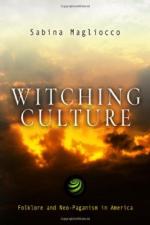|
This section contains 2,442 words (approx. 9 pages at 300 words per page) |

|
As a result of the Enlightenment, a period of intellectual rationalism (reasoning) that started in seventeenth-century Europe and came to the United States in the eighteenth century, (see Chapter 5), cultural, social, economic, and technological changes continued to push fears of witches into the background. Nevertheless, belief in witchcraft still flourished, particularly among peasant societies in isolated areas of Europe. In the nineteenth century an organized revival of witchcraft, called Wicca, took place in Britain among the Romantics, a social and literary group that rejected the dehumanizing effects of industrialization and tried to recapture a closeness to nature. ("Wicca" is a term for "witch" that has been traced to Germanic words like wik, meaning "to bend," or Old English words such as wiccian, meaning "to cast spells," and witan, or "wise person.") In the early 1900s the British Order of the Druids, who claimed to have roots in pre-Christian...
|
This section contains 2,442 words (approx. 9 pages at 300 words per page) |

|


